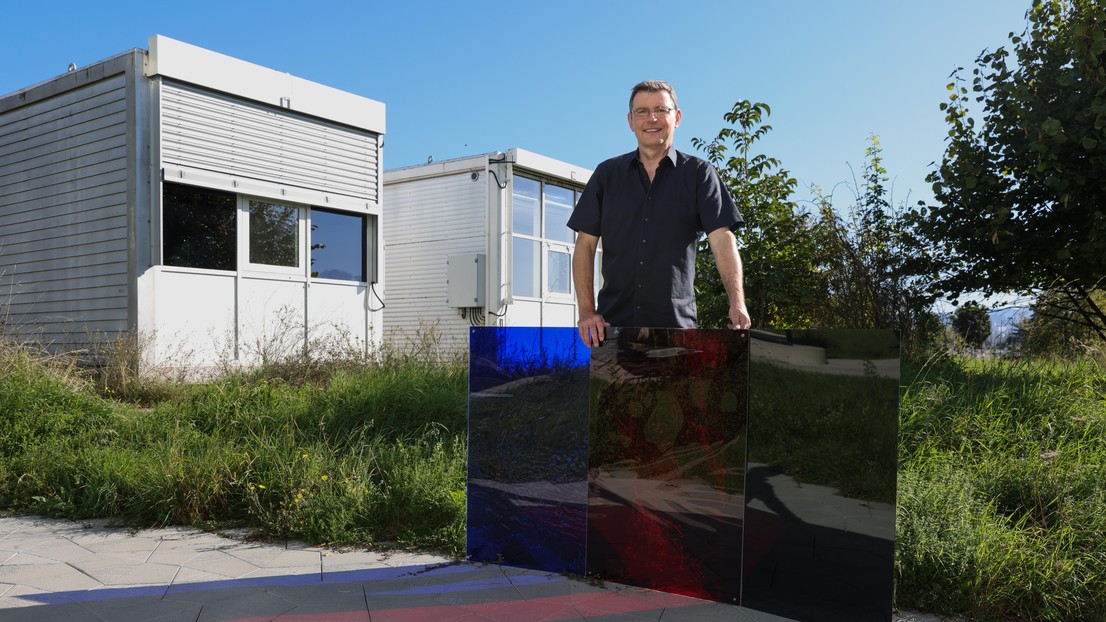
Senior scientist Jan Wienold with the colored filters used during the experiment. 2025 EPFL/Alain Herzog - CC-BY-SA 4.0
An EPFL study shows red light, like blue, causes stronger glare than white, challenging the century-old and globally used function that describes how the human eye responds to different light wavelengths. The findings have implications for standards and research, as well as for the comfort of building occupants.
Glare from sunlight can be a major source of discomfort for building occupants, especially when the windows have inadequate shadings. New smart glazing technology aims to provide protection from overheating in summer and from glare by changing the tint level to reduce the amount of solar radiation that passes through. Most of these glazing types change their color to blue while tinting.
All measurements and evaluations of light are currently based on the "spectral sensitivity function V(λ)" developed a century ago. These include light levels, glare and even the material properties of glazing. The function describes the average human eye's perception and sensitivity to light across different wavelengths. But a study involving researchers at EPFL's Laboratory of Integrated Performance in Design (LIPID) has produced findings that invalidate this function and could not only upend the thinking behind current standards, but also change research and practice in this field.
Similar to blue colored light
Until now, scientists generally believed that only blue light causes more discomfort than white light of the same intensity, mainly owing to research on LED-headlamps for cars. But the new study, which has received funding from the Swiss National Science Foundation (SNSF) and appeared recently in Scientific Reports, found that red light shows similar behavior to blue light.
Sneha Jain, the study's lead author and a then-member of the LIPID team, carried out the experiments as part of her PhD thesis. Participants were asked to sit inside a controlled daylit office where the sun shone through colored glazing. They were exposed to four glare conditions - red, blue, green and neutral - created by different color filters in the glazing, for both low-intensity and high-intensity daylight. The participants unanimously reported that the red glazing resulted in the most disturbing amount of glare, followed by blue and, to a lesser extent, green.
Our results show that current glare models aren't fully reliable.
Deviations of more than 50%
"The glare from red glazing was a real surprise because it contradicts the literature," says Jan Wienold, a research and teaching associate at LIPID and the study's principal investigator. "Our results show that current glare models aren't fully reliable and that colorimetric methods should be used for strongly colored light sources and glazing. The photometric approach employed in today's standards can produce deviations of more than 50% in glare estimations."
By highlighting the unexpectedly strong glare perception caused by red light, the team's findings could pave the way to smarter glazing technology and improved LED systems for producing colored light. The team hopes their research will be used to improve existing glare models and upgrade the current standards.

New experiments
In the meantime, Wienold has started a new four-year, SNSF-funded study to further investigate this issue and quantify the observed effects by extending the experiments to other colors and adding other experimental methods.






